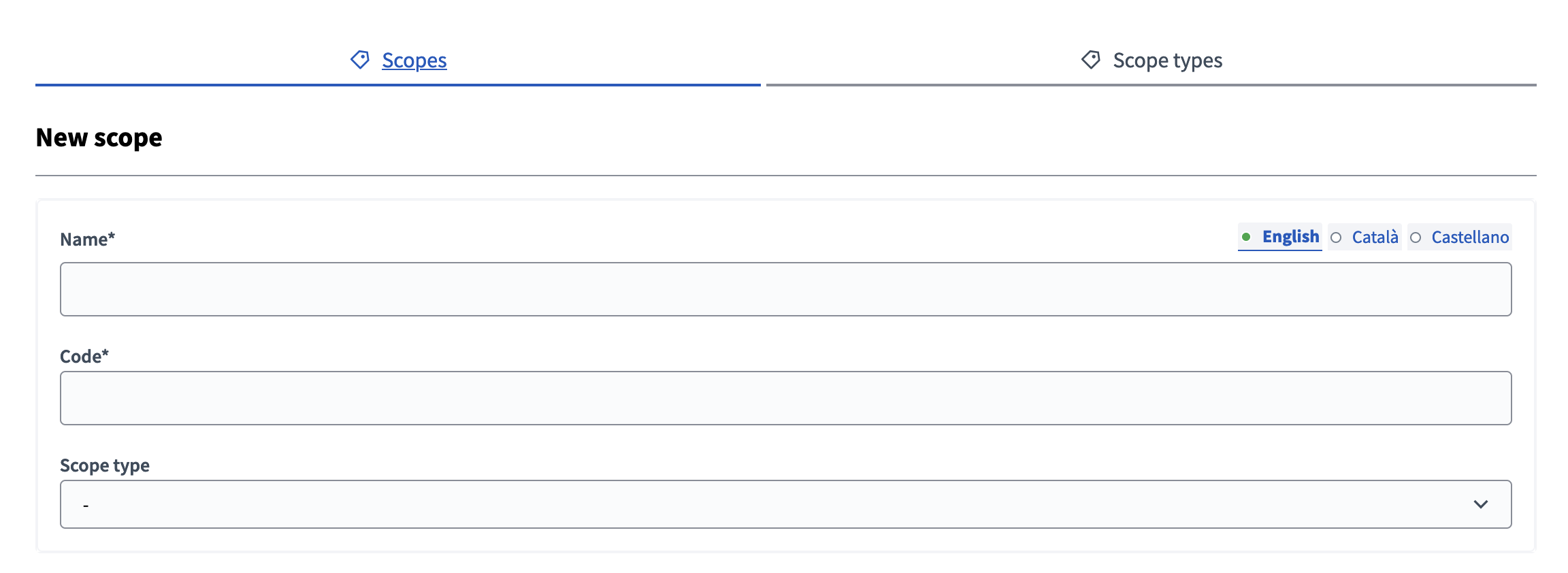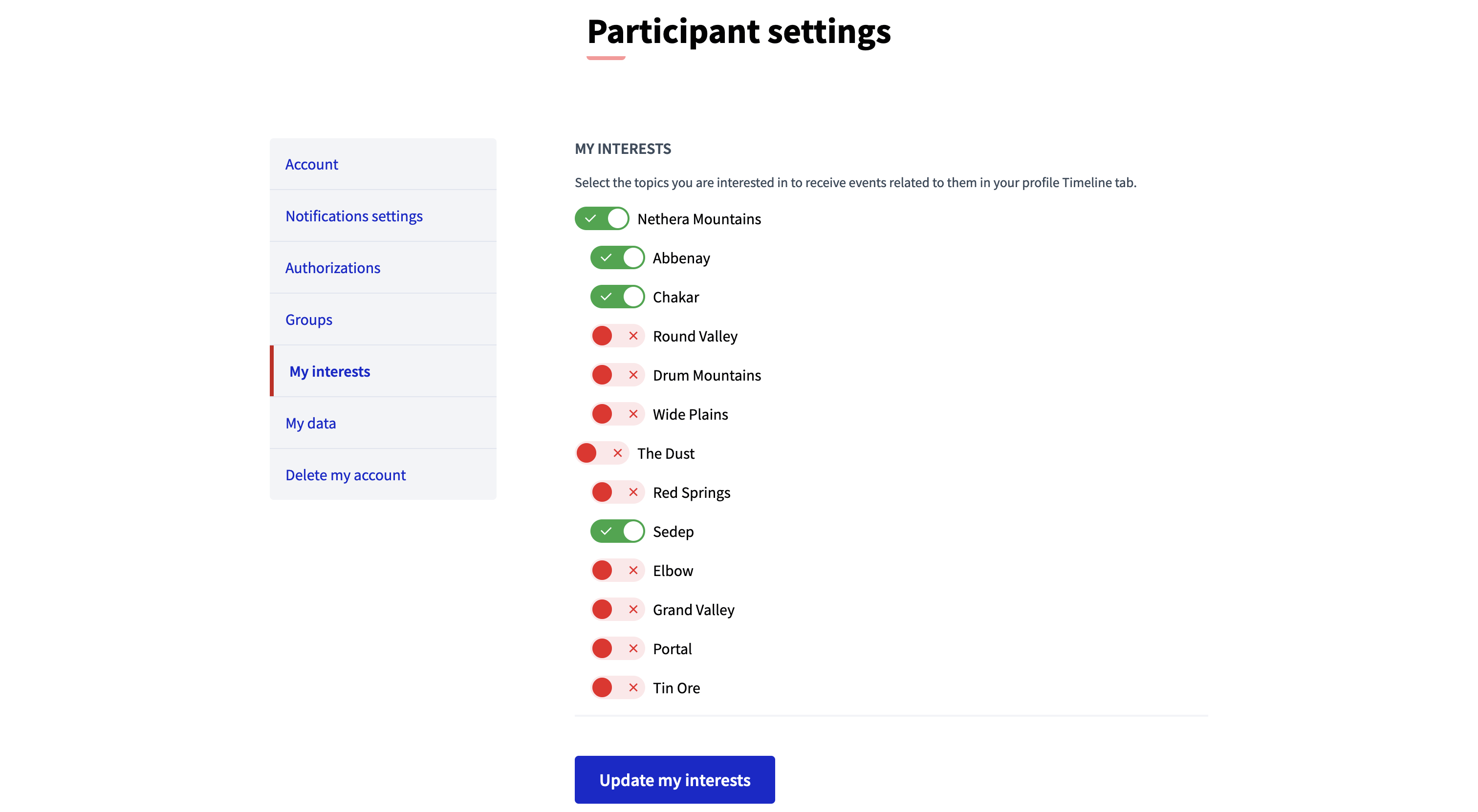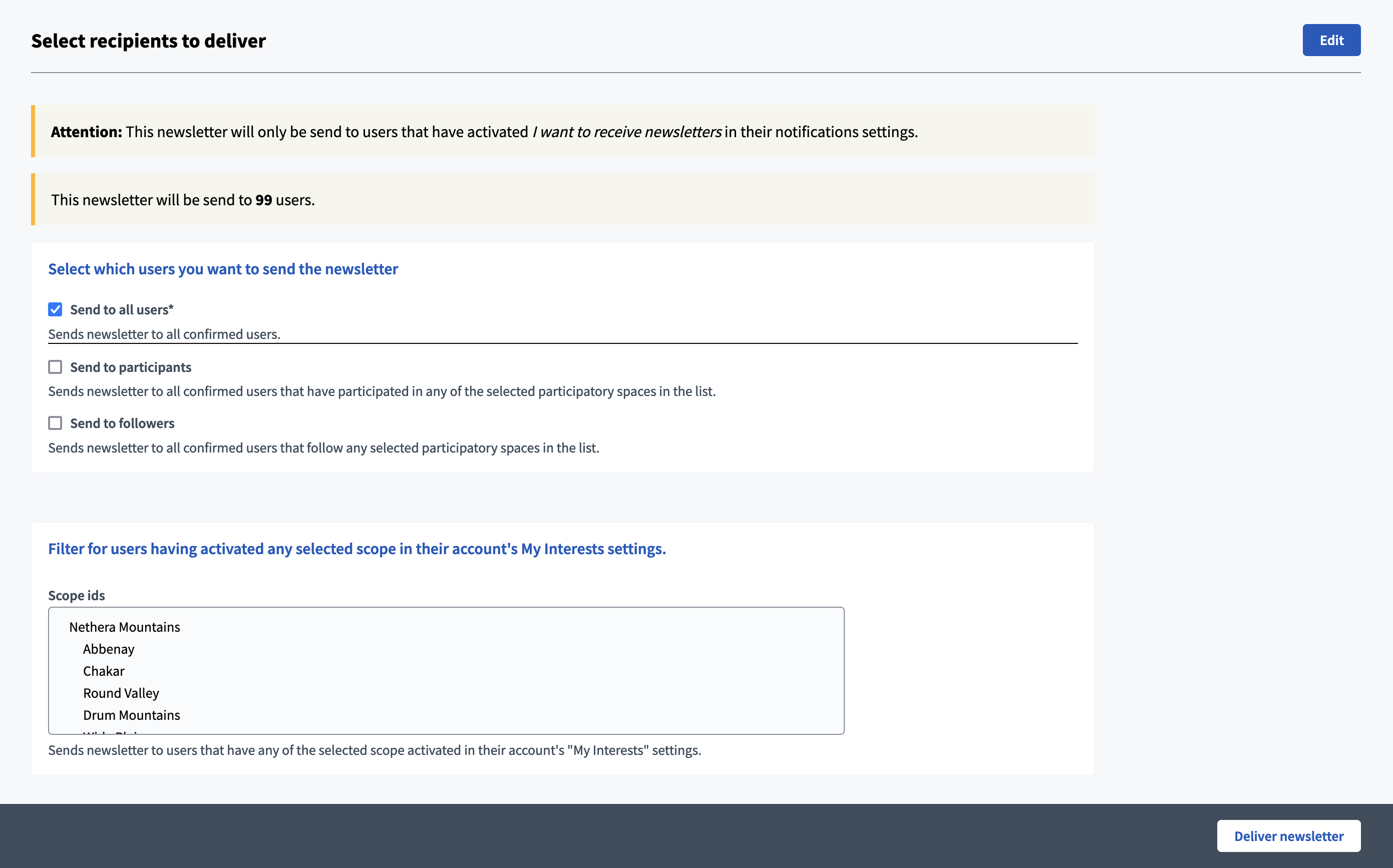Scopes
Understand the basics
Scopes are the set of territories or subjects that an Organization has. A scope may have child scopes.
For instance, in the case of the city of Barcelona the scopes correspond to its districts, and the children of a district are its neighborhoods. They can also have types, so it can be configured, for example, by thematic and also territorial scopes.
Most of the components and spaces in Decidim allow you to configure Scopes in one way or another.

Configuration
Create a scope type
To create a scope type, click the "Add" button in the Scope types tab.

| Field | Type | Description |
|---|---|---|
Name |
Required |
Name of the scope type in singular. |
Plural |
Required |
Name of the scope type in plural. |
Create a scope
To create a scope, click the "Add" button in the Scope tab.

| Field | Type | Description |
|---|---|---|
Name |
Required |
Name of the scope. |
Code |
Required |
Internal identifier of the scope. |
Scope type |
Optional |
Which type of scope it’s related to. It can be blank. |
Actions
| Icon | Name | Definition |
|---|---|---|
|
Browse |
See and configure the children scopes for this Scope. |
|
Edit |
Edit form for a Scope. |
|
Delete |
To delete this scope. |
Content filtering
Most of the spaces and components allows an administrator or a participant to associate them to a scope. This allows to filter by scopes when exploring them.


Some examples:
-
With Accountability module, so it’s possible to filter Results
-
Assemblies and Processes can have Scopes. It’s used for filtering multiple assemblies in the main listing page (/assemblies or /processes). These can be hidden with the "Enable participatory space filters" in the configuration.
-
Filtering in the sidebar is also available in some components, where you can control if these filters are shown with the "Scopes enabled" checkbox in the settings. It also enables the scope selector in the resource creation form.
You can also configure a participatory space so the filtering only concerns one scope and its children scopes. For example, let’s imagine your organization have 3 different scopes for 3 cities, each of them having children scopes for the cities neighbourhoods. On a participatory space which concerns only one of the cities, you are able to select only this scope and its children so that users do not see the scopes of other cities in the filter options.
User interests and newsletters
A participant can choose which scopes they want to follow in its account.

This is used in the Newsletters, in the "Select recipients to deliver" step.
